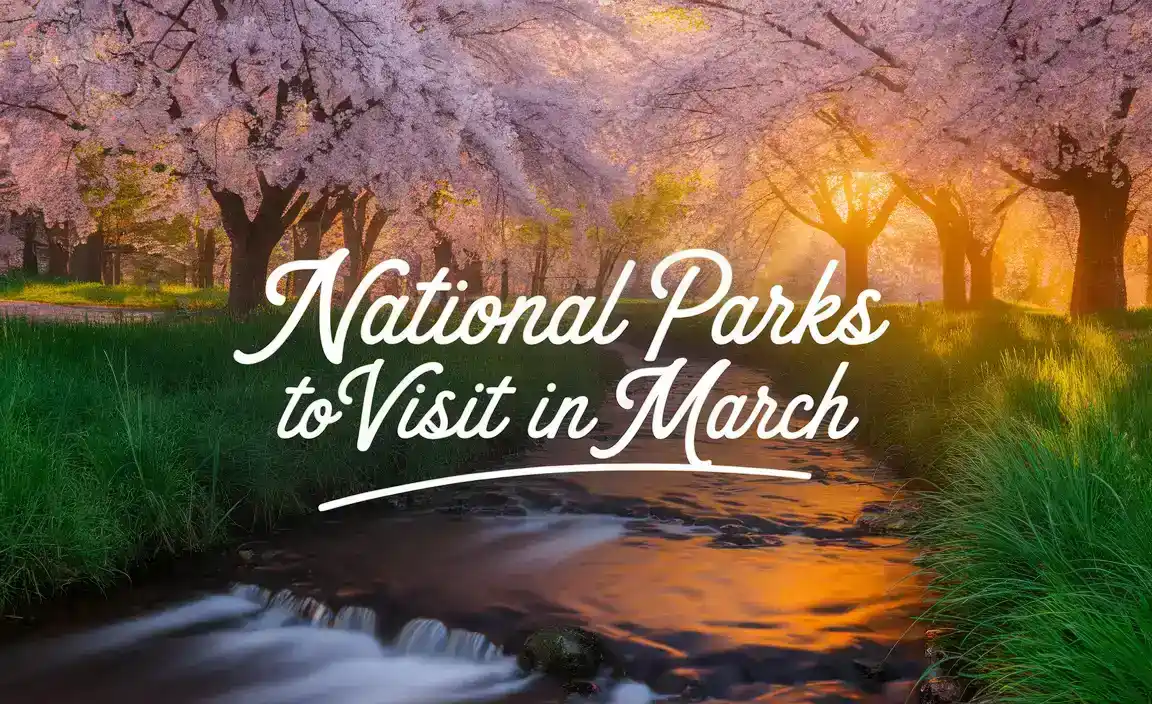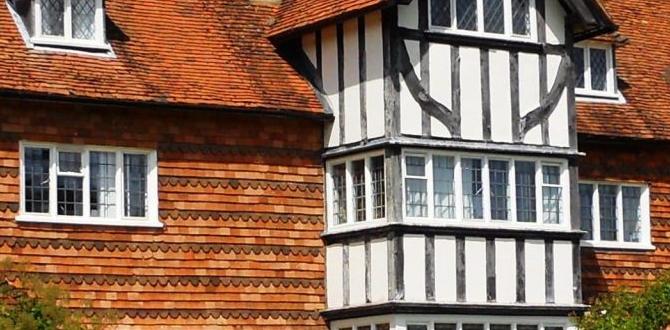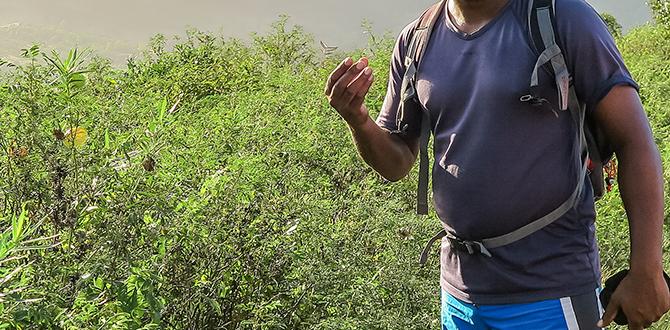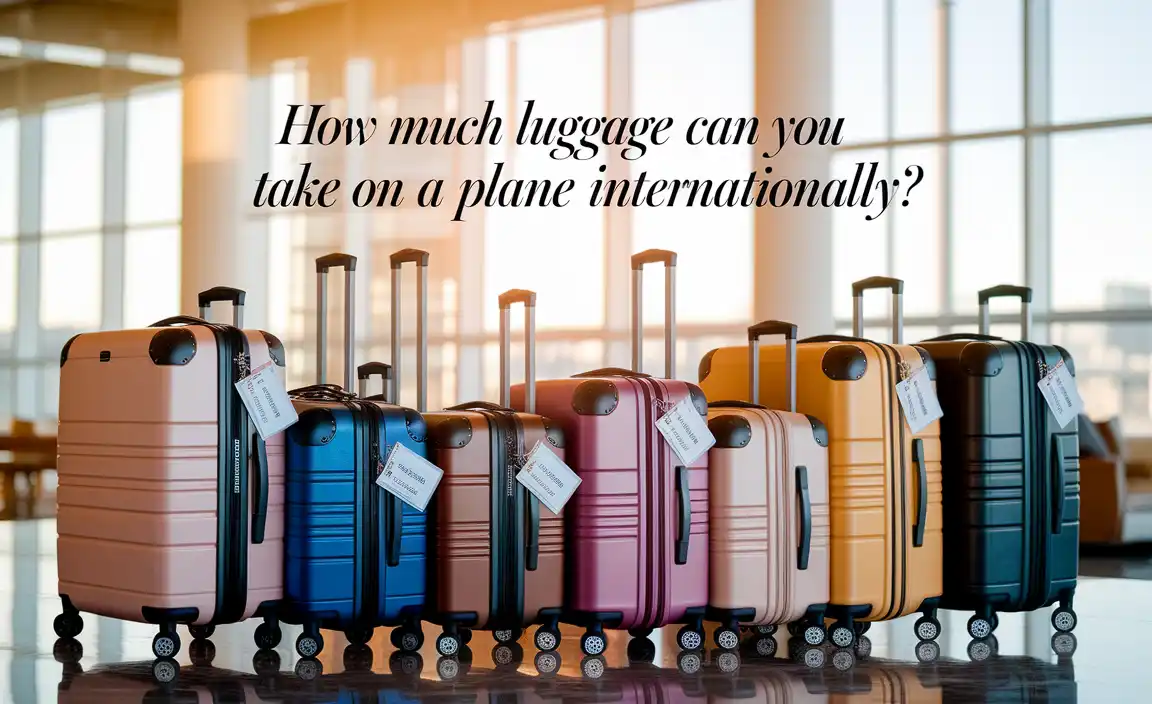Banff accessible travel guide: Expert tips for stress-free adventures ensuring comfort and inclusion. Discover essential hacks for seamless experiences in this stunning Canadian Rockies destination, making memories accessible to everyone.
Planning a dream trip to Banff National Park? It’s a place of breathtaking beauty, with turquoise lakes and towering mountains that call to adventurers. But if you’re traveling with accessibility needs, you might wonder if Banff can truly deliver the dream. We get it! Navigating a new destination can feel daunting, especially when you need to ensure comfort and ease. This guide is here to show you how. We’ve gathered essential, practical tips to make your Banff accessible adventure not just possible, but absolutely spectacular. Get ready to explore the magic of Banff with confidence!
Banff Accessible Travel Guide: Genius, Essential Tips
Banff National Park is a jewel in the Canadian Rockies, famous for its dramatic landscapes and incredible outdoor opportunities. For many, it’s a bucket-list destination. The good news is that Parks Canada and local operators are increasingly committed to making this natural wonderland accessible to everyone. With a little planning, travelers with varied mobility needs can experience the very best Banff has to offer. From accessible viewpoints to thoughtful transportation options, here’s how to make your Banff journey smooth, comfortable, and unforgettable.
Planning Your Accessible Banff Adventure
The first step to an accessible and enjoyable trip is thorough planning. This means researching your options in advance, understanding what facilities are available, and booking accommodations and tours that meet your specific needs. Don’t hesitate to contact venues directly to confirm their accessibility features. Most Banff businesses are happy to provide details to ensure your visit is comfortable.
Key Considerations for Accessible Travel in Banff:
- Accommodation: Look for hotels or lodges that offer accessible rooms with features like roll-in showers, grab bars, and wider doorways. Specify your needs when booking.
- Transportation: How will you get around? Consider accessible shuttles, private vans, or if you’re driving, ensure your vehicle can accommodate any mobility devices.
- Activities: Research which attractions and activities are most accessible. Many popular spots now have paved paths, ramps, or alternative viewing areas.
- Timing: Visiting during the shoulder seasons (late spring, early autumn) can mean fewer crowds, which can enhance comfort and ease of navigation.
- Support: If you use personal care items like adult diapers for travel comfort or security, packing ample supplies is crucial. Consider discreet and comfortable options suitable for active days.
Getting Around Banff: Accessible Transportation Options
Navigating Banff National Park is a key part of the experience, and thankfully, there are several ways to do so comfortably and accessibly.
Banff Hop-On Hop-Off Sightseeing Bus
This is a fantastic option for exploring key viewpoints around the town of Banff and beyond. Many of these buses are equipped with lifts or ramps. It’s always best to confirm accessibility directly with the tour operator when booking to ensure it meets your specific requirements.
Roam Public Transit
Roam Transit operates bus services within Banff townsite and to popular nearby attractions like Lake Minnewanka and Sulphur Mountain. Their fleet includes accessible buses with ramps and designated seating areas. You can find detailed route information and accessibility features on the Roam Transit website.
Accessible Taxis and Shuttles
Several taxi companies and private shuttle services in Banff offer wheelchair-accessible vehicles. Booking these in advance is highly recommended, especially during peak season. Inquire about lift capabilities and space for mobility aids.
Driving and Parking
If you are driving your own vehicle, Banff has a number of designated accessible parking spots in various lots throughout the townsite and at major attractions. Ensure you have a valid disability parking placard. Remember that some park roads, like the scenic Bow Valley Parkway, can have seasonal closures or restrictions, so check current conditions.
Must-Visit Accessible Attractions in Banff
Banff is brimming with stunning sights, and many are surprisingly accessible, allowing everyone to soak in the mountain majesty.
Banff Gondola (Sulphur Mountain)
The Banff Gondola offers a breathtaking ride to the summit of Sulphur Mountain. The gondola cabins are accessible, and the summit boardwalk at the top is paved and relatively gentle, providing incredible panoramic views. There are interpretive exhibits and a dining facility, all designed with accessibility in mind.
Lake Louise Lakeshore Trail
While the full hike around Lake Louise might be challenging, the paved Lakeshore Trail from the Fairmont Chateau Lake Louise to the end of the lake is generally flat and smooth. This allows for wonderful views of the iconic lake and Victoria Glacier without strenuous effort. Wheelchairs and other mobility devices can navigate this path with ease.
Moraine Lake (Seasonal Access)
Access to Moraine Lake is restricted to shuttle buses, Parks Canada shuttles, or authorized tour operators during the season (usually early June to mid-October). The Rockpile viewpoint offers spectacular views, and while climbing the rock steps is not accessible, the area around the lake shore can be explored. Check the Parks Canada website for the latest access information and shuttle options, as these are the most practical ways to reach it for many.
Bow Valley Parkway Scenic Drive
This beautiful alternative toHighway 1 offers scenic pull-offs and wildlife viewing opportunities. Many of these pull-offs are accessible, providing chances to enjoy the forest and mountain vistas. Remember to drive cautiously and be aware of wildlife.
Johnston Canyon Lower Falls Walkway
This popular trail features a well-maintained catwalk built into the canyon walls, leading to the Lower Falls. This is a relatively easy and accessible walk, offering a unique perspective of the canyon’s dramatic beauty. The path is paved and has some gentle inclines. The Upper Falls area involves more challenging terrain.
Banff Upper Hot Springs
A relaxing and accessible option, the Banff Upper Hot Springs offer therapeutic mineral waters with stunning mountain views. The facility typically includes accessible change rooms and easy access to the pools.
Accommodation: Finding Your Accessible Base Camp
Choosing the right place to stay is fundamental for a comfortable trip. Banff has a range of accommodation options, many of which cater to accessible needs.
Accessible Hotels in Banff
Many major hotel chains and independent properties in Banff thoughtfully provide accessible rooms. When booking, always look for specific features:
- Roll-in showers or accessible bathtubs
- Grab bars in bathrooms
- Wider doorways
- Lowered light switches and thermostats
- Space for mobility devices
It’s often best to call the hotel directly to discuss your requirements rather than relying solely on online booking platforms. This ensures they can confirm they have the right room available for you.
Bed & Breakfasts and Vacation Rentals
Some smaller B&Bs and vacation rentals might offer accessible options, but these can be more variable. Always inquire about specific features and accessibility before booking.
Consider Location
Think about how close your accommodation is to accessible transit stops or attractions you plan to visit. Staying centrally located can reduce the need for extensive travel once you’re there.
Dining with Ease: Accessible Restaurants in Banff
Enjoying Banff’s culinary scene should be a pleasure, not a challenge. Many restaurants throughout Banff townsite are designed to accommodate guests with mobility needs.
General Accessibility Features to Look For:
- Level entrances or ramps
- Accessible restrooms
- Sufficient space between tables for wheelchair maneuverability
- Staff trained to assist
Popular dining areas in the town of Banff, particularly along Banff Avenue, tend to have better accessibility due to modern building standards. Restaurants within larger hotels often have excellent accessibility features. It’s always a good idea to check a restaurant’s website or call ahead to confirm their accessibility, especially if you have specific needs.
Sample of Accessible Dining Areas:
Areas around Banff Avenue offer numerous dining options. Restaurants within the Rimrock Resort Hotel or Fairmont Banff Springs, while grand, often have undergone renovations to improve accessibility. Casual cafes and eateries in the downtown core generally welcome guests with mobility challenges.
Essential Packing for Accessible Travel
Packing smart can significantly enhance your comfort and independence during your trip. Beyond the usual travel essentials, consider these items.
Mobility Aid Accessories
- Repair Kit: A small kit with basic tools, tire patch kits, or spare parts for wheelchairs or scooters can be a lifesaver.
- Weather Protection: A waterproof cover for your wheelchair or mobility scooter, especially important for unpredictable mountain weather.
- Comfort Items: Cushions, adaptive grips, or straps that make your mobility device more comfortable for extended use.
Personal Care Items
For travelers who rely on adult diapers or protective underwear for bladder or bowel incontinence, packing sufficient, comfortable, and discreet supplies is vital. Look for options that offer:
- High Absorbency: For peace of mind during long excursions or travel.
- Odor Control: Essential for comfort and confidence.
- Discreet Fit: So you can move freely and comfortably.
- Skin Protection: To prevent irritation during extended wear.
Brands that offer overnight protection or extra-absorbent, slim-fit designs are excellent choices for active travel days exploring Banff’s trails and viewpoints. It’s always wise to pack more than you think you’ll need, as access to specific products can be limited in smaller towns.
Other Helpful Items
- Portable Charger: For your phone, especially important for navigation and emergencies.
- Comfortable Footwear: Even if you use a wheelchair, comfortable shoes are good for transfers and if you have any ability to move.
- Layered Clothing: Mountain weather can change rapidly. Pack layers to stay comfortable in different temperatures.
- Sun Protection: Sunscreen, hats, and sunglasses are essential at high altitudes.
Tips for Specific Accessibility Needs
Banff’s natural beauty is meant to be enjoyed by all. Here are some tailor-made tips for various accessibility needs.
Wheelchair Users
Focus on Paved Trails: Stick to well-maintained, paved paths like the Lake Louise Lakeshore Trail, Johnston Canyon Lower Falls, and the summit boardwalk at Sulphur Mountain. The Parks Canada website provides trail difficulty ratings which can be helpful. Many viewpoints along the scenic parkways are also accessible.
Use Parks Canada Services: For the most up-to-date information on accessible trails and facilities, the Parks Canada Banff website is an invaluable resource. They often detail surface types and grades.
Mobility Impairments (Non-wheelchair users)
Utilize Accessible Shuttles: For areas with challenging parking or longer distances, consider accessible public transit (Roam Transit) or private accessible shuttles. This allows you to reach attractions without worrying about parking.
Pacing is Key: Banff’s beauty is best savored. Plan shorter excursions and incorporate rest breaks. Many visitor centres and lodges offer comfortable seating areas.
Leverage Gondolas and Chairlifts: The Banff Gondola provides effortless access to incredible mountain vistas. Some other ski resorts might offer scenic chairlift rides during the summer, often with accessible loading procedures. Always confirm in advance.
Visual Impairments
Audio Guides and Interpretive Programs: Many attractions offer audio guides or guided interpretive walks that can enhance the experience. Banff Park Museum National Historic Site, for instance, often has tactile exhibits and engaging guides.
Tactile Information: Parks Canada often provides interpretive panels with Braille or large print. Visitor centres are excellent resources for tactile maps and information.
Companion Services: Traveling with a sighted companion can greatly enhance exploration. If traveling solo, consider looking into local support services or informing staff at attractions of your needs.
Cognitive or Sensory Sensitivities
Visit During Off-Peak Hours: To avoid crowds and noise, try visiting popular spots early in the morning or later in the afternoon, and consider visiting during the shoulder seasons (May-June, September-October).
Quiet Areas: Identify quieter areas for breaks. Many hotels and lodges have lounges or gardens. Visitor centres can also provide information on less busy spots. The Whyte Museum of the Canadian Rockies in Banff often offers a quieter, more contemplative experience.
Plan Your Itinerary: Having a clear, structured plan for each day can reduce anxiety. Knowing what to expect can make the experience smoother.
Accessible Activities and Experiences
Beyond the main viewpoints, Banff offers unique experiences that can be adapted for accessibility.
Banff Park Museum National Historic Site
This is Canada’s oldest national park building and is a treasure trove of natural history. It’s a compact and accessible museum with fascinating exhibits that can be explored at your own pace.
Whyte Museum of the Canadian Rockies
Discover the art, history, and culture of the Canadian Rockies here. The museum is generally accessible and offers a more indoor, culture-focused activity.
Accessible Photography Tours
Some local tour operators may offer private photography tours that can be customized to your mobility needs, taking you to accessible scenic spots at optimal times for light.
Wildlife Viewing
While wildlife viewing is often spontaneous, driving the Bow Valley Parkway or Lake Minnewanka Loop with designated accessible pull-offs can increase your chances. Always maintain a safe distance from animals. Parks Canada offers resources on responsible wildlife viewing.
Accessibility Resources in Banff National Park
Here are some of the most important resources for planning your accessible trip:
| Organization/Resource | Website/Contact | Primary Use for Accessible Travel |
|---|---|---|
| Parks Canada (Banff National Park) | parks.canada.ca/pn-np/yp-py/access | Official information on park facilities, trails, transport, and closures for accessibility. Crucial for up-to-date info. |
| Roam Transit | roamtransit.com/accessibility/ | Accessible public transit within Banff townsite and to key attractions. Route maps and accessibility features detailed. |
| Banff Tourism (Travel Alberta) | travelalberta.com/ca/places-to-go/banff-region/ | General tourism information, lodging, and activities. Look for sections or filters related to accessibility. |
| Banff Centre for Arts and Creativity | banffcentre.ca/visit-us | Information on events and venue accessibility. Often hosts accessible performances and exhibitions. |
| Local Accessible Taxi Services | Various providers (search “Banff accessible taxi”) | Pre-booked accessible transportation for tours or point-to-point travel. Confirm vehicle specifics. |
Always double-check the most current information directly with providers, as services and facilities can change.
Frequently Asked Questions (FAQ)
Q1: Can I use a wheelchair at iconic spots like Lake Louise and Moraine Lake?
A1: At Lake Louise, the paved Lakeshore Trail is very accessible for wheelchairs. Moraine Lake access is limited to shuttles; while the area around the lake shore is generally manageable, the famous Rockpile viewpoint is not wheelchair accessible. Always check current shuttle regulations and access for Moraine Lake before your visit.
Q2: Are Banff Gondola and other mountain transport options accessible?
A2: Yes, the Banff Gondola to Sulphur Mountain is fully accessible, including the gondola cabins and the summit boardwalk. It’s a top accessible attraction. Always confirm accessibility directly with other specific lift or gondola operators you plan to use.
Q3: How can I find accessible accommodation in Banff?
A3: Search for hotels that explicitly advertise accessible rooms and features like roll-in showers and grab bars. Calling the hotel directly is the best way to confirm availability and suitability for your needs.
Q4: Is Banff National Park well-equipped for visitors with disabilities?
A4: Banff National Park is making significant strides in accessibility. Parks Canada is committed to improving access, and many popular attractions, transit systems, and accommodations offer good accessibility.





